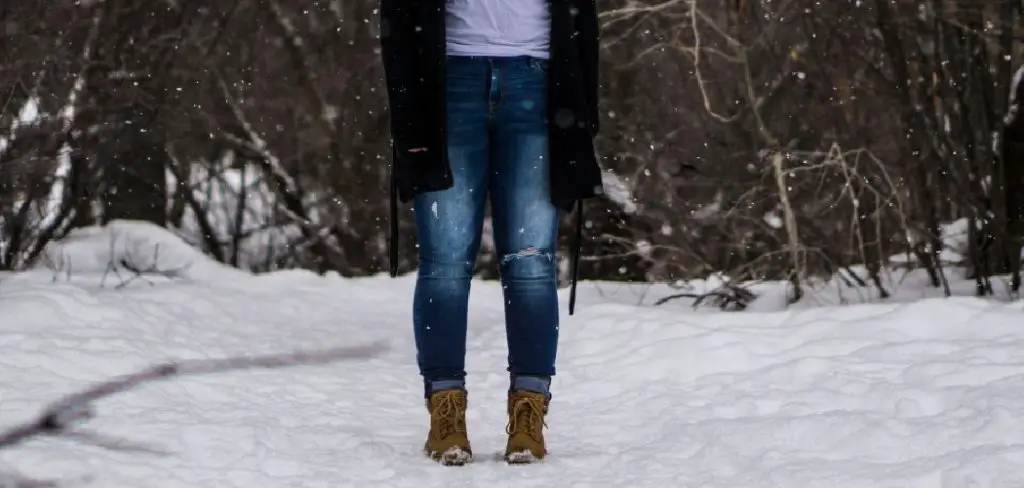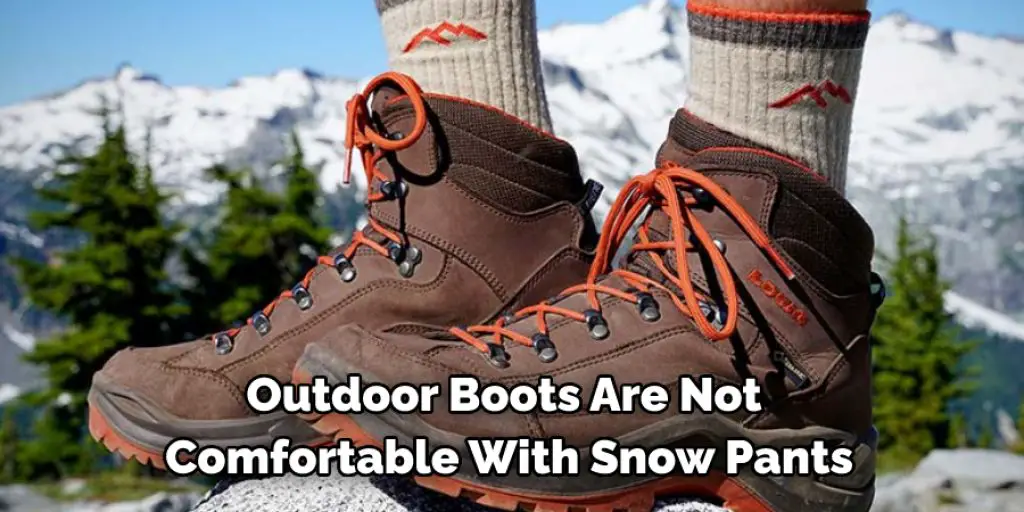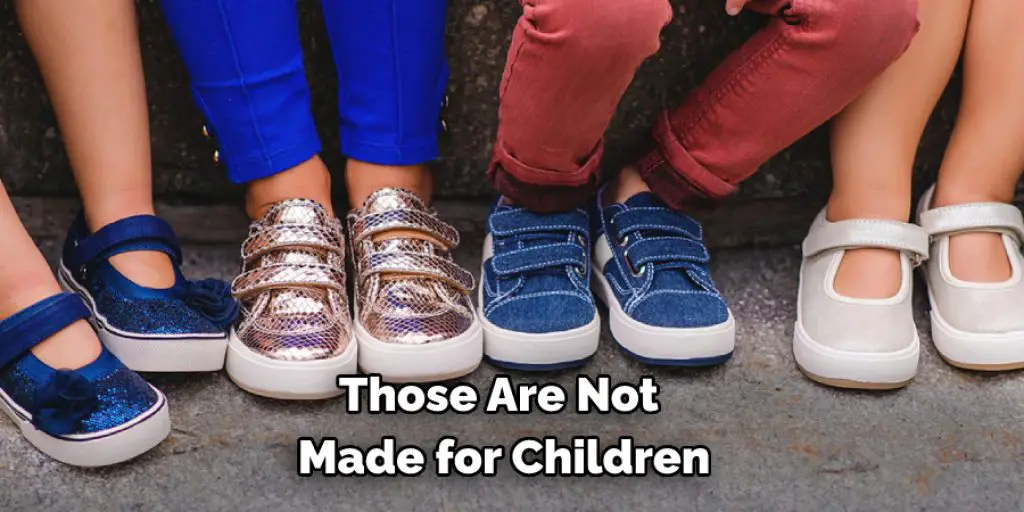If you are wondering if snow pants go over boots, the answer is yes! Though there may be some debate on the matter, it is generally accepted that wearing snow pants over your shoes will keep you warmer and more protected from the cold weather. So if you’re gearing up to take on a winter wonderland, don’t forget to pack your trusty snow pants! This article will discuss details about do snow pants go over boots.
Snow pants are the clothing that is worn over your regular clothes and under winter gear such as coats and snowsuits. Depending on how cold it is, you may be required to wear multiple layers of snow pants. Many brands manufacture this type of pant, so, first and foremost, check what size you need.

A Detailed Guide on Do Snow Pants Go Over Boots
Winter brings cold weather, snow, and the need to keep warm. For most people, this means wearing layers of clothing. But an essential part of keeping warm is boots or shoes, which have the potential to get wet from slush on the ground or melted snow.
Snow pants are used in cold winter weather to keep the wearer warm and dry and provide comfort and protection from the elements.
Unlike in the summertime, wearing shorts or capris offers an easy way to stay cool without getting too hot; when it’s cold outside, one can wear only so many layers of clothing before overheating becomes an issue.
Snow pants for children are available with insulation or without, depending on the expected temperature during use. Snow pants for adults have adjustable waists for a good fit regardless of what layers people choose to wear underneath them.
There is no absolute rule about whether snow pants should go over or vice versa because each person will have different needs and use the clothing differently. However, do note that boots and snow pants must fit properly. Children’s snow pants should be just long enough to cover their feet, and adult snow pants should be long enough to protect the lower legs but not any further than that.
Reason Why Should Snow Pants Go Over Boots:
Reason 1: Design and Structure
Snow pants and boots are designed for different purposes. Snow pants, as noted above, provide insulation and protection from the cold, snow, and other elements. However, they also have a specific design to accommodate wearing them with winter footwear such as boots. This means that they have elastic at the bottom of the legs to fit easily over boots without being difficult to put on or take off.
In contrast, boots are made for keeping feet dry in slushy puddles or melted snow while providing the warmth required in temperatures below freezing point. Boots range from ankle-length flats to knee-high styles that allow people to walk through deep snow without getting their lower legs wet.
The construction also includes insulating materials such as faux fur lining and cushioning where the feet rest against the insides of the footwear.
Outdoor boots are not designed for accessible or comfortable wear with snow pants that have elastic at the bottom of the legs. The soft, stretchy material on snow pants makes it challenging to slide boots on and off, which can be an issue after coming in from outside, where boots may be icy.
In addition, most outdoor boots do not contain any insulation, meaning a person who wears them is unlikely to want anything else over their feet when going inside.

The design is also different between children’s and adults’ snow pants and boots. Children often need snow pants to go over their winter clothing because they can’t fit into adult sizes but may outgrow childrens’ styles quickly.
Also, children’s snow pants are often too short to fit over children’s boots. On the other hand, adults’ styles can be bought in multiple sizes and may include options for adjustable waists. Boots are always available in adult sizes but cannot accommodate both adults and children.
Reason 2: Space
Snow pants are designed with insulation that traps air inside to create a layer of trapped heat around the legs when worn under other clothing or by themselves. This is important for keeping body temperature stable while outdoors during cold weather.
For this reason, along with the possibility that these layers may move around each time someone rolls their legs, it is not practical to wear them over boots or shoes due to lack of space inside these protective trousers.
When snow pants are worn by themselves, they can be pulled up above the waist to allow winter boots underneath them. This will enable people to slip their feet inside-outside footwear for short periods or take off boots without removing snow pants.
However, it is difficult to fit more than one pair of boots underneath snow pants worn this way because it takes up too much leg space and interferes with your movement while you walk. This may be impractical in snowy conditions where people need to keep moving even if they are cold or prefer to wear multiple pairs of shoes rather than large boots indoors. This is a crucial reason in do snow pants go over boots.
Reason 3: Hygiene
Snow pants are designed for adults who want protection from freezing temperatures while out in the snow or on other types of winter excursions. They are not made for children who tend to fall more often, get dirtier faster, and are less likely to notice when their pants have become wet or dirty from outside elements.
The materials used in adult snow pants are designed with durability in mind to withstand being out in the cold. This means they generally do not have any watering inside them to prevent moisture from seeping through the fabric during use.

However, with younger people, it is common for them to come in contact with water while playing on damp grass or uneven surfaces where melting ice may be present without knowing it until their feet start to feel wet or cold after sitting still for a long time.
Wearing snow pants over boots where moisture may enter the footwear is also an issue. A person wearing snow pants with no waterproof lining will have wet or dirty boots, which may cause the insulation to wear out more quickly on these parts of the footwear. The moisture can also affect the materials used for insulating purposes, making it less effective at trapping heat around the legs.
Suppose children are not allowed to remove their boots before coming inside after being outside in snowy weather conditions. In that case, they may bring some dirt ordination into the home that could be tracked onto carpets or furniture.
For this reason, it is best to have children remove their outdoor clothing altogether when coming indoors so that all of their outer layers are isolated from indoor sections of your house and do not spread contaminants throughout various areas where you move.
Another option is to wear snow pants under outer layers of clothing over boots, which may be more practical for especially active children during the winter months. When this is done, it can be helpful to have waterproof fabrics in the areas that come into contact with wet or cold surfaces to prevent moisture from seeping through the outer layer and reaching the insulation inside. This also protects against dirt picked up my boots when outside.

Reason 4: Functionality
Snow pants are explicitly designed for snowy weather conditions while preventing heat loss to keep people safe in these environmental conditions. They are made with sturdy materials that are flexible enough for regular movement but not so thin they easily rip when pulled on or rubbed against other objects.
On average, adult snow pants are designed with elastic drawstrings around the waist, adjustable straps around the cuffs for a secure fit at the bottom of the pants, and an adjustable strap in the back with a buckle to seal in heat.
These snow pants are meant to be worn fully zipped up, so they do not become loose while moving. However, some models are available that accommodate people who need to move their legs more freely when walking or climbing stairs.
These typically have extended gussets above and below the knee, allowing people wearing them to bend their knees and walk without feeling any discomfort or excess material bunching up against joints during movement.
Most children’s snow pants do not have this feature because it can be challenging for parents to find flexibility enough to let their kids move freely. Yet, they are still made of durable material that can withstand the wear and tear brought on by outdoor play.

It should also be noted that many adults do not have these extended gussets because they are not typically used for purposes other than play activities in deeper snow. For example, snowmobiling or different outdoor sports where people must kneel or sit on the ground may require an extra room at the knee so people can wear their pants comfortably without feeling constricted during movement.
You Can Check it Out to Keep Sand Out of Running Shoes
Frequently Asked Questions
What is the Difference Between Snow Pants and Snowboarding Pants?
Snowboarding pants are designed to protect you from the cold while snowboarding. They are made of a thicker, heavier fabric than regular winter pants, have zippered front and back pockets, and a drawstring waist. Snow pants are not typically designed to keep you warm, only protect you from the cold.
Should You Wear a Layer Under Snow Pants?
Yes, you should wear a layer under snow pants if the temperature forecast calls for below freezing temperatures. This is because when it’s cold outside and the ground frosty or icy, your clothes will Debian act as insulation and keep you warm. However, make sure that whatever layer you are wearing is breathable so that moisture doesn’t build up inside your clothing and freeze on contact with the skin.
What Do Most People Wear Under Snow Pants?
It is usually recommended that you wear breathable socks and compression clothing such as compression leggings or sleeves. These garments help keep blood flowing properly to your legs and feet, which helps prevent injuries from occurring due to cold weather conditions.
Additionally, Snow Pant Heater Packs can be a great way to stay warm while outside in freezing temperatures. They contain heaters that work by drawing warmth from the surroundings, so you don’t have to sacrifice comfort in order to stay warm. And if inclement weather continues unabated long after sunrise or sunset, consider purchasing an emergency snowstorm kit – this will include items like extra clothes and foodstuffs in case you get stranded indoors during a storm.
Should Snow Pants Be Loose or Tight?
Many people think that they should be loose-fitting for winter weather. However, this may not always be the best decision. While a snug fit will help to prevent snow from getting inside your clothes and potentially ruining them, it can also cause you to sweat more in cold temperatures.
A good rule of thumb is to choose a pair of snow pants that are comfortable but slightly tight so that even if you do get wet, your clothing won’t come off. Additionally, make sure the waistband is large enough so that it doesn’t ride up when you move around or walk uphill.
Conclusion
When it comes to snow, you need to be prepared for anything! Do your research and know the best way to stay warm. Snow pants are not supposed to go over boots but instead should cover them up. If you’re unsure what type of footwear is suitable for the weather conditions ahead, ask an expert before heading out into the cold. You’ll thank yourself later when that road or sidewalk turns icy underfoot! We hope you have the answer do snow pants go over boots.

